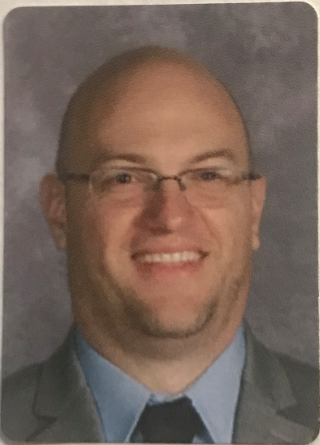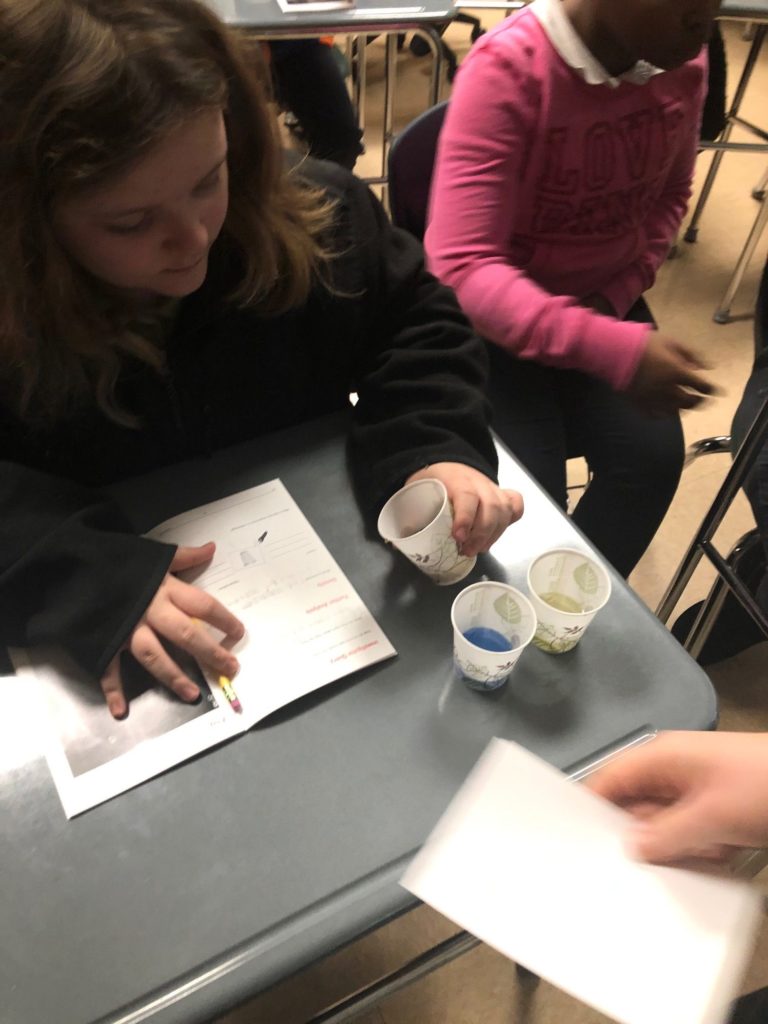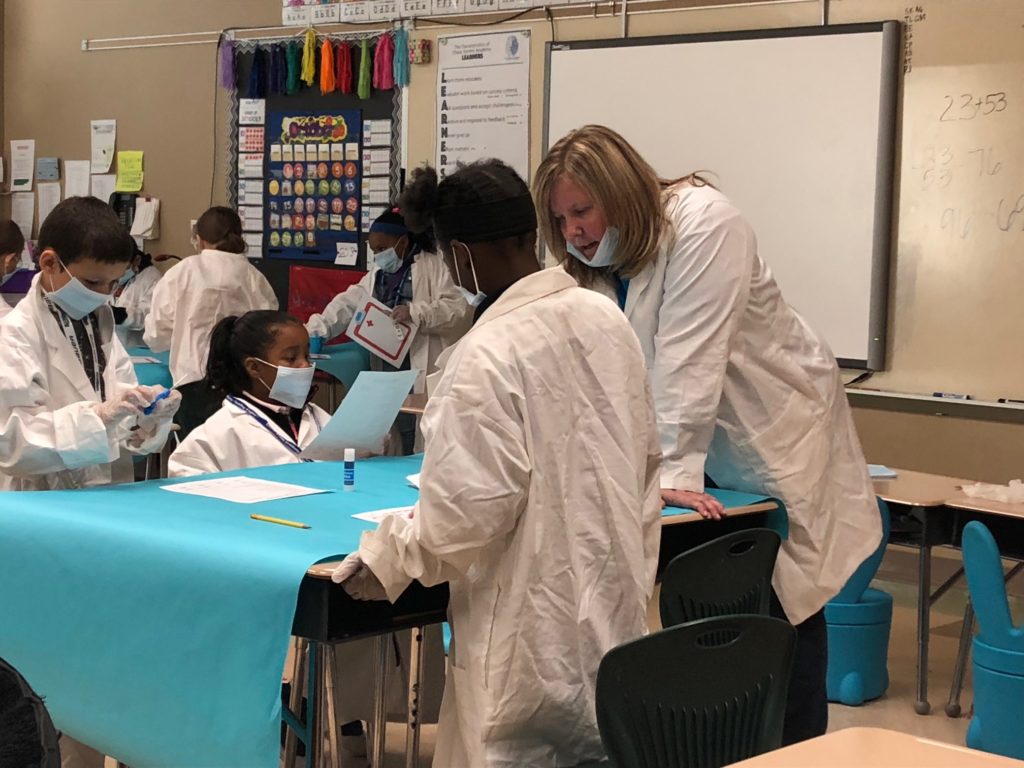Good things are happening fast at Chase STEMM Academy. The K-8 building in the Toledo Public district earned an overall grade of “B” on its latest School Report Card from the Ohio Department of Education (ODE), after logging an “F” in 2015. Chase also has received statewide honors, being named an Ohio School to Watch by ODE and earning the department’s Momentum Award. How has the urban school come so far so quickly? We asked principal Jack Hunter about the reasons for Chase’s success:
Q: Tell us about your background and your work in education.

A: I began my educational teaching career in urban Toledo as a math specialist. I enjoyed sharing my passion for mathematics with Toledo Public Schools students as a math specialist, but I also realized I wanted a classroom of my own.
My passion has always been to make an impact on the most impoverished students and how important mathematics is in today’s world. I had the opportunity to be hired by Detroit Public Schools to teach mathematics to middle school students in an urban area. I knew I loved teaching and working with students, but an opportunity as an entrepreneur in the business sector presented itself and now I had a decision to make.
I left the teaching profession for eight years, building a successful business and working for a venture capital firm. I enjoyed working in business, but my thoughts were always focused on how working in a business environment brings me back to mathematics education.
I returned to Toledo Public Schools looking to fulfil my ambition of serving the underprivileged. I was now teaching mathematics, helping middle school students reach their potential and feeling success in a mathematics classroom. I also realized I wanted to make a schoolwide impact and went back to school and received an administration degree from the University of Cincinnati.
I was appointed as principal at Chase STEMM Academy six years ago. This is the beginning of year seven as the principal at Chase.
Q: Tell us about Chase: its educational philosophy – including the emphasis on shared leadership, mastery based learning, social equity – and its enrollment.
A: Chase is an urban school serving 100 percent free/reduced-priced-lunch learners. The current enrollment is 350, of which 85 percent are minorities.
The educational philosophy, which is visible every day at Chase, is “every person, every child has a specific skill set that has value.” Our responsibility at Chase is to cultivate each student’s ability.
Principals must be leaders and model the kind of instructional pedagogy that is needed for students to prosper. I watched educators work tirelessly with little to no movement on student achievement. I knew I needed to assist them with improving the scholastic aptitude of all students.
In addition to working hard on improving the climate and culture of the building with my teacher leaders, I also spent time cultivating a shared leadership environment. Shared leadership gives teachers the opportunity to make decisions that are not always instructional in nature. A unified shared approach moves you closer to everyone’s goal – student success.
I spent a summer researching and devising our version of mastery based learning. We took a hybrid of Hattie, Marzano and our own effect size calculated practices and created a model that has improved our school immensely.
I was asked to publish a book on mastery based learning in mathematics, which I did with one of my educators, Abbey Mezinko – “Mastery Based Learning in Mathematics (K-8).” We have spent this past year presenting at national conferences and helping multiple schools improve student success using mastery based learning in mathematics. The model we used and created allows educators to do what they do best, which is teach!
Shared leadership is also to be credited for our school turnaround. I firmly believe that decisions should be made by the practitioners in the field. There are many times where I could have made a decision based upon what I thought the teachers needed. When I asked teachers what they needed the results were surprising. What I predicted as a need was entirely different than what information I received from teachers.
This doesn’t diminish the leader’s impact. It helps focus on the evidence based practices that move the needle on student achievement. There is not a single decision about purchasing and instruction that is not shared through teacher leaders.
Q: Your school’s recent successes include earning a “B” on the most recent Ohio Department of Education School Report Card, after receiving an “F” just a few years before. How did you make such a rapid improvement at your school? What were/are the significant keys to your success?
A: I am asked this question a lot when presenting and when educators visit Chase. I like to think of improvement in three discrete conceptual ways:
- Student/family relationships
- Only use evidence based practices
- Instructional leadership
I spent significant time selling my vision and showing educators evidence and research behind the importance of student/family relationships, using only evidence based practices and sharing in the practices that would move our school forward.
Q: Why was making progress on the state report card important to you and your staff, and how did these improvements fit into your STEMM philosophy?
A: The analysis of data has changed the business and educational landscape. In my opinion, this granular approach to student achievement has allowed leadership and educators to have discussions around non-subjective data assessments.
At Chase, though we still rely heavily on formative assessments, we also find great value in calculating the effect size of a specific practice for specific content areas to see if it moved the needle. We believe that guessing on which learning strategy works for kids is not an approach we use at Chase.
Using a single STEMM objective or combining more than one STEMM concept in designing each learning objective allows our educators to be artistic while still creating amazing interdisciplinary lessons.
Q: How have your corporate partners helped your school to make strides? How about the parents?
A: Six years ago, we had one disengaged corporate sponsor with three volunteers. We now have worked to grow this same corporate relationship organically and have more than 50 volunteers. These volunteers provide mentoring to students at Chase. In addition, this corporate sponsor provides on average about $25,000 to our operating budget.
We knew we had to find a way for these relationships to grow to provide authentic STEM lessons via mentoring. This is in addition to other national and local companies that provide fiscal support, as well as human capital to move our mission forward.
These types of relationships allow the leadership team to stay abreast of current business trends and also provide a sounding board for questions and decisions we need to make.
Some of the critical questions we ask ourselves each year as STEM educators are:
- What does a lesson or unit look like when it is infused with the STEMM framework?
- What does a Chase STEMM classroom look and sound like?
- Are there any unintended outcomes or results as we emphasize STEMM?
- How can we sustain the momentum?
We wanted the district to continue to support STEMM and also knew the school community and educators needed to see results that STEMM was moving the school forward. We have seen initiatives come and go in schools and realized STEMM was the right way for students to think and learn and educators to instruct in the 21st century.
Parents are an integral part of our school and stakeholder team. Although our school has about 20 percent transiency on a year-to-year basis, we find there is always a cohort of parents who see the school as the center of the community. We spend a large majority of our time providing resources to our families instead of asking them for support. We understand to break the cycle of poverty education is the only antidote. This includes math tutoring, resume building and other ways to improve the lives of everyone in the community.
Q: In addition to your improved report card, Chase has been designated an Ohio School to Watch, and it also won the ODE’s Momentum Award. How did Chase win this recognition, and what does it mean to the students and staff members?
A: We won this recognition by hard work as a team and moving everyone in the right direction. Chase teachers run with new initiatives and move these initiatives and student achievement forward.
It is the instructional leader’s responsibility to keep everyone engaged and monitor the progress of each initiative. The instructional leader validates teachers’ hard work, and the awards are true validations. The awards are an integral part of the celebration process for my educators and students.
It is also important to always keep in mind the social emotional well-being of each student. Being an urban school presents numerous challenges compared to schools in high-wealth areas. Agreed, they have different types of problems, but one thing that cannot be disputed is their students’ readiness for kindergarten.
Our students enter school lacking knowledge of the letters of the alphabet or sometimes even their names. We spend time helping our learners catch up as soon as they enter our school.
Our staff and students are very pleased with our “B” rating. Our students tell other students all the time how proud they are with all their accomplishments. It gives the students a sense of pride in their school and themselves.
Our ultimate goal is to be recognized as a Blue Ribbon School of Excellence. We have not seen a school with demographics like ours awarded a Blue Ribbon Recognition in a long time.
Q: What changes/areas of emphasis would you recommend to a school principal who wants to make the kind of progress your school has achieved?
 A: As an instructional leader, create a school climate that is conducive to learning and growth. Lead by example; as a leader, your office is just an extension of the classroom. Learn from others and ask questions.
A: As an instructional leader, create a school climate that is conducive to learning and growth. Lead by example; as a leader, your office is just an extension of the classroom. Learn from others and ask questions.
I think as leaders we sometimes feel like we need to have all the answers. I have written a book, “The Five Phases of Successful Urban Leadership (K-8),” which can be used as a guide to hone your leadership skills to maximize the effectiveness of your educators. This book will also motivate your stakeholders to join you in this crucial educational process.
Leaders can get overwhelmed by the running of a building and never get a chance to embrace the change they can create.
Q: Is there anything else you would like to share about your school?
A: I always tell everyone we are not a perfect school! Our learners, educators and leaders are always growing and trying to improve themselves for the betterment of our school community.
I leave all the people I meet with my personal mission statement and ask them to evaluate themselves: “To develop significant leaders so they can uncover the hidden talent around them.”
